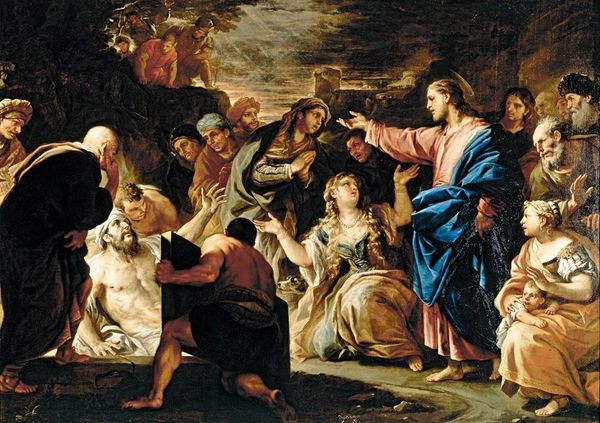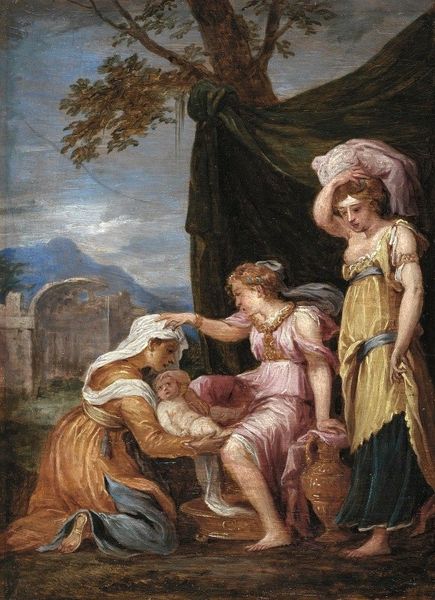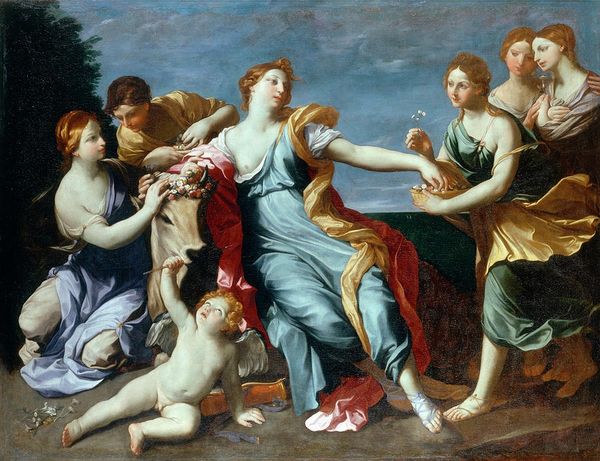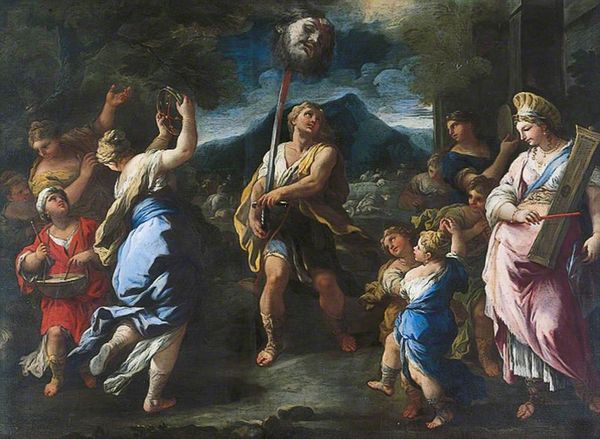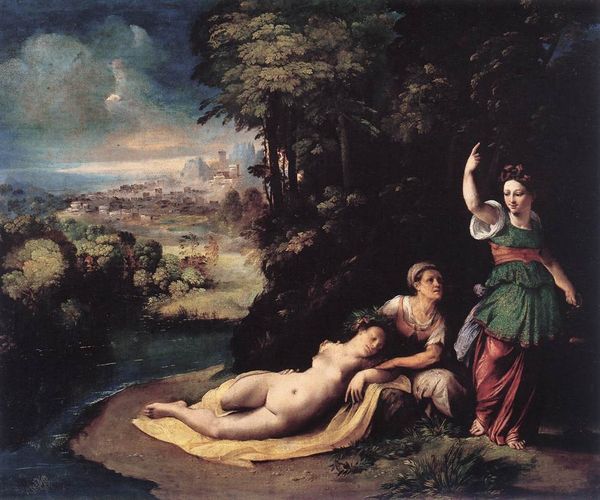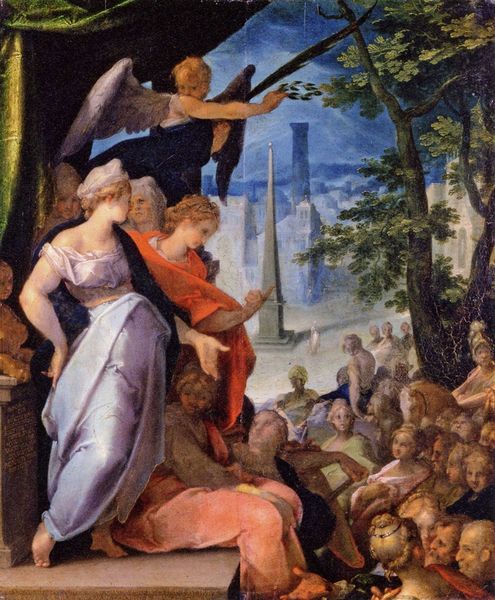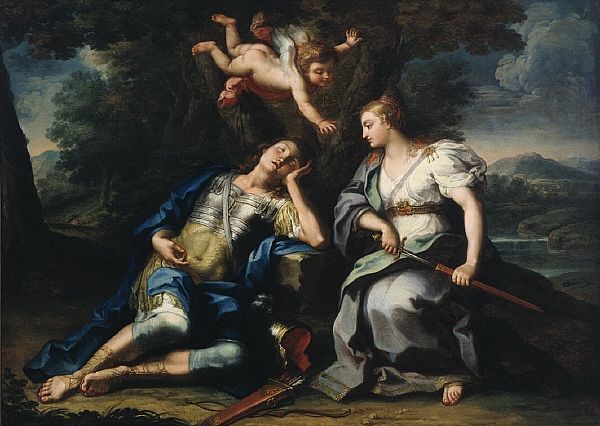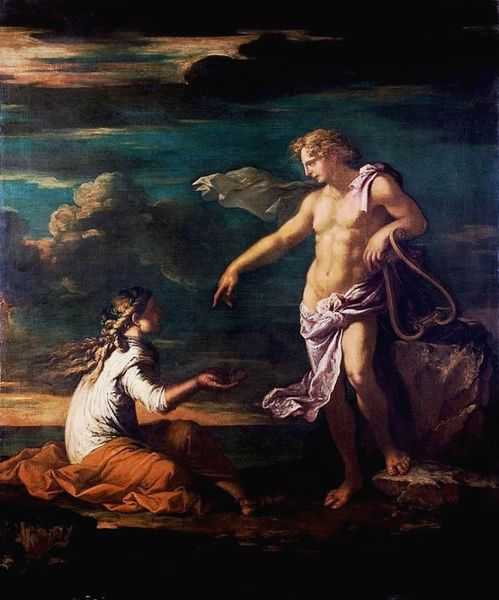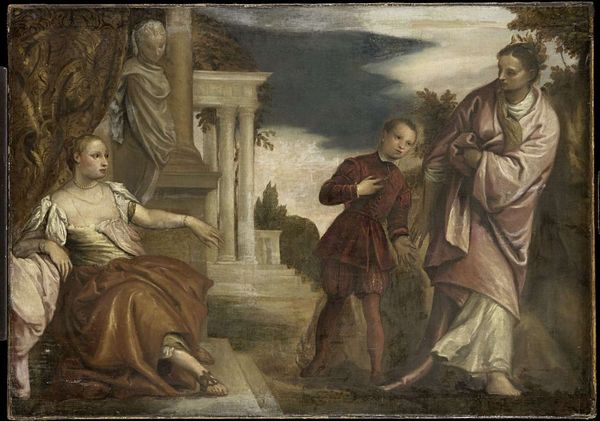
painting, oil-paint
#
venetian-painting
#
allegory
#
baroque
#
painting
#
oil-paint
#
landscape
#
figuration
#
oil painting
#
underpainting
#
christianity
#
mythology
#
painting painterly
#
history-painting
Dimensions: 67 x 95 cm
Copyright: Public domain
Editor: So, we're looking at "Do Not Touch Me," an oil painting, likely by Paolo Veronese, although its exact date is unknown. The figures feel monumental within the landscape. I’m really struck by how Veronese has captured movement – the gestures seem so dynamic. What draws your attention when you examine the visual structure of this work? Curator: Certainly. Let’s consider first the compositional elements. Note the distinct diagonal axes—the figure of Christ descends dynamically from left to right, opposed by the rising gesture of Mary Magdalene. Observe the artist’s painterly brushstrokes creating rich textures, especially in the draped fabrics. Do you perceive how Veronese manipulates light and shadow to direct the viewer’s eye? Editor: Yes, the way the light catches on the folds of fabric is incredible. Also, the garden setting. How does that play into the painting’s impact, visually speaking? Curator: The placement of the figures within the verdant setting, replete with gradations of green and touches of pink, serves not just as a backdrop but as an integral part of the overall design. Notice how Veronese employs color to distinguish between the terrestrial and what could be termed a more divine space. What feelings arise as you study the tonal modulations and formal arrangements? Editor: I find the color palette somewhat unexpected. The pinkish-red robe seems a bold choice. The visual contrasts give a vibrant energy and heightened drama. The planes direct the viewers eyes. This perspective gives a dynamic feel, wouldn’t you say? Curator: Indeed, that bold color choice functions as a pivotal formal device. Think about how the artist has intentionally disrupted conventional notions of pictorial space. It provokes, destabilizes easy readings. Editor: It’s fascinating to analyze the piece with attention to the color theory. I will remember to appreciate color when discussing art in the future. Curator: Precisely! By dissecting the elements and formal relationships, one may extract more significant levels of meaning and affective responses.
Comments
No comments
Be the first to comment and join the conversation on the ultimate creative platform.
